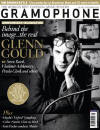Texte paru dans: / Appeared in:
*

GRAMOPHONE (09/2012)
Pour s'abonner /
Subscription information
Atma
ACD22373
0722056237321 (V33)
Consultez toutes les évaluations recensées pour ce cd
~~~~ Reach all the evaluations located for this CD
Reviewer: Edward Greenfield
Canadians record the ‘Royal Consorts’
of Lawes the younger
William Lawes was the leading composer at the court of
Charles I for most of the Civil War, before he was killed in 1645 at the
siege of Chester, as a musician outshining his elder brother, Henry. These
10 Royall Consorts are among his best-known works, here beautifully
performed and recorded by the Canadian period string-players of Les Voix
Humaines.
They are presented on the two discs in what the group feels is the most effective order, with plenty of variety between each of the suites or ‘setts’ of dances. Interestingly, the spelling of the different dances tends to indicate the English pronunciation at the time, as in ‘alman’ for ‘allemande’ and ‘paven’ for ‘pavane’. Strikingly, if we remember the example of Bach above all, Lawes regarded the sarabande as a relatively fast dance, not at all solemn.
The players on their period instruments — two Baroque violins, two violas da gamba and two theorbos — characterise well, not least in several of the pavens which are much longer and more varied than most of the dances, as in No 7 in A minor and No 9 in F. Varying his usual pattern of an opening paven, Lawes has instead a ‘fantazy’ in No 6 in D, echoing the form made popular by Elizabethan and Jacobean composers of a generation earlier and also of course by Purcell a generation later, in the miraculous sequence of masterly Fantasias written early in his career.
Happily, the players regularly emphasise the dance element in these pieces, springing the triple-time rhythms infectiously, notably in the vigorous corants. In one or two of the Setts Lawes includes a very lively, specifically English dance, what he calls a ‘morriss’, and equally he has several ‘eco’ movements with phrases repeated softly, all of which is most persuasively brought out by the players of Les Voix Humaines.
Cliquez l'un ou l'autre
bouton pour découvrir bien d'autres critiques de CD
Click either button for many other reviews


